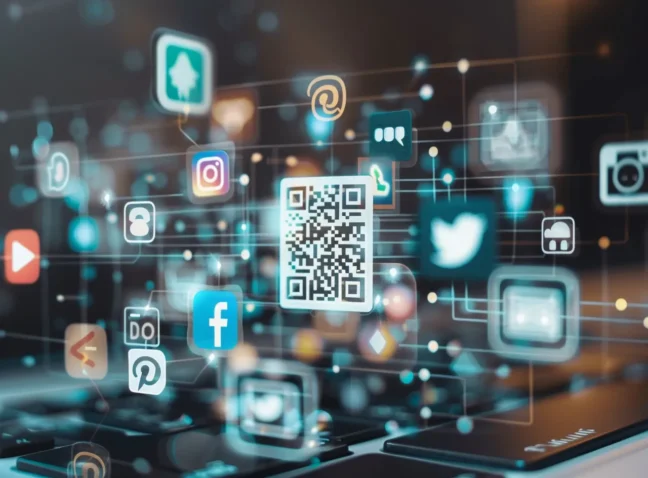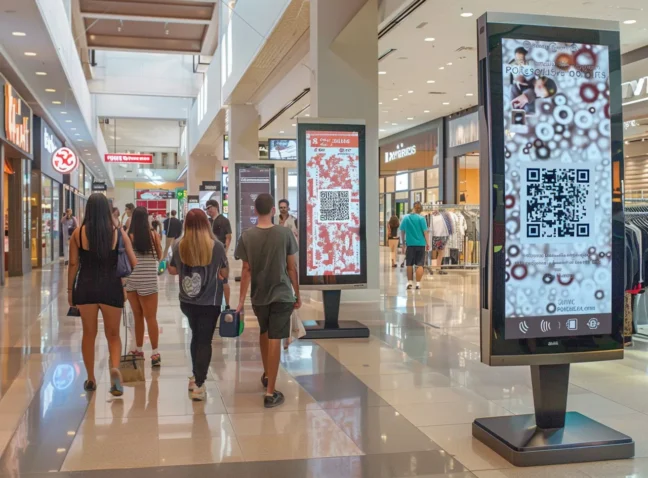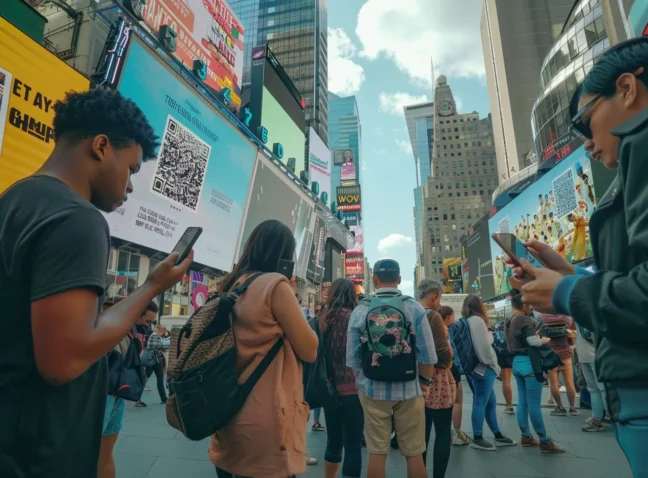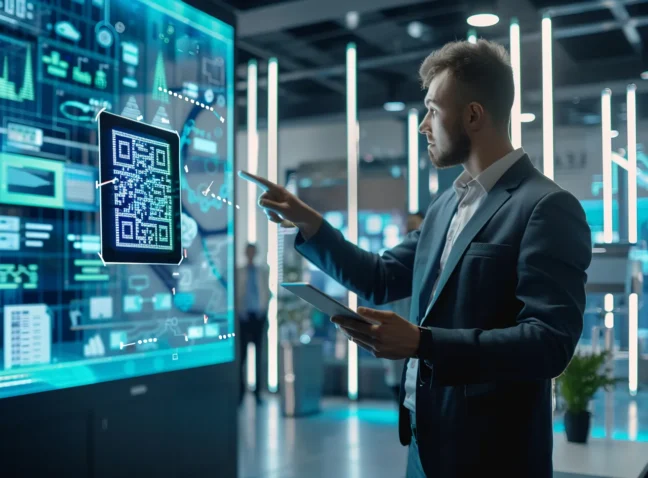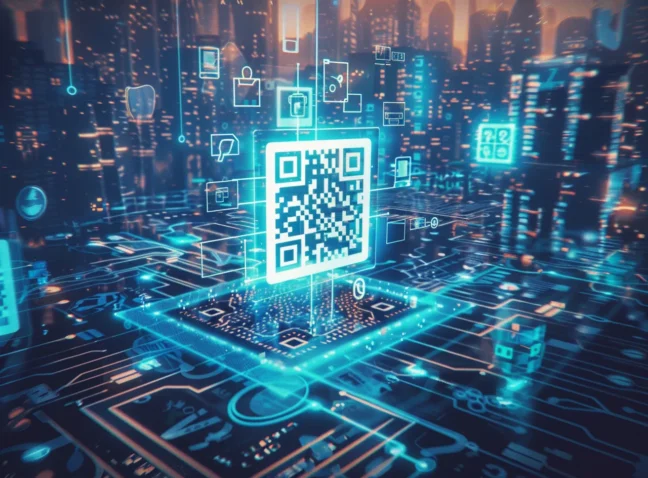Amazon is at the forefront of integrating cutting-edge technology to make shopping as convenient as possible, and QR codes are the latest tool in their arsenal. These small, square codes are becoming a staple for Amazon shoppers, offering instant access to a world of products, deals, and information with just a quick scan. Whether you’re looking to reorder your favorite items, track packages, or discover new products, Amazon’s use of QR codes is making the shopping experience smoother and more interactive than ever before. Curious about how these codes are transforming the way we shop on Amazon? Keep reading to find out.
Why Use QR Codes for E-commerce Platforms?
QR codes have transformed the business-consumer interaction, with Amazon leading the charge in innovation. Elegantly integrating QR codes into its operations, Amazon offers a quick, efficient, and interactive shopping experience. Serving as a bridge between online content and the real world, QR codes facilitate product verification and access to user reviews. Amazon’s introduction of SmileCodes for special discounts demonstrates its commitment to leveraging QR technology for marketing and customer engagement. In physical stores like Amazon Books and Amazon Go, QR codes simplify price checks, provide product information, and enable frictionless checkout through ‘Just Walk Out’ technology.
Employ QR Codes for Amazon: Transforming the Business-Consumer Interaction
Amazon’s adoption of QR codes reflects our commitment to innovation and customer satisfaction. By embedding QR codes on products and throughout their stores, they simplify product tracking and inventory management while enriching the customer’s shopping journey. The QR code system integrated into Amazon’s network of warehouses and fulfillment centers ensures efficient handling and shipping of products, maintaining our reputation for prompt service delivery.
According to Forbes 2023, 64% of consumers have used QR codes for shopping-related activities, with Amazon being a primary platform for such interactions. CNBC 2022 reports a 20% annual increase in QR code scans in physical stores, indicating a growing trend in offline-to-online engagement facilitated by Amazon’s integration of QR technology.
Additionally, Business Insider 2023 notes a 15% boost in customer engagement and conversion rates due to Amazon’s implementation of SmileCodes. Statista 2023 reveals that 78% of Amazon shoppers find QR codes helpful in accessing product information and reviews while browsing in-store. Furthermore, TechCrunch 2022 highlights a 25% reduction in checkout time resulting from Amazon’s introduction of QR codes in its physical stores, contributing to improved customer satisfaction and loyalty.
Advantages of QR Codes for Amazon: Easy Tracking & Shopping
Leveraging QR codes, Amazon has adeptly integrated these digital tools to enhance the shopping experience and operational efficiency. Through quick scans, customers and sellers alike enjoy a more connected and intuitive interaction with the platform. Here are key benefits observed:
- Boosts Conversion Rates by up to 30%: QR codes make the buying process quicker, resulting in higher conversion rates for Amazon sellers.
- Enhances Customer Engagement: QR codes create an interactive shopping journey, boosting customer interaction with Amazon’s products and promotions.
- Facilitates Easy Product Tracking: With a simple scan, customers can track their orders, receiving timely updates on their Amazon purchases.
- Enables Targeted Marketing Campaigns: Amazon leverages QR code data to personalize marketing efforts, leading to more effective advertising strategies.
- Simplifies Inventory Management: QR codes aid in tracking inventory, assisting Amazon in maintaining optimal stock levels and avoiding shortages
The Downside of QR Codes for eCommerce
While QR codes bring a wealth of convenience and innovation to the marketplace, it’s crucial to acknowledge the hurdles they introduce. Security is a top concern, as QR codes can be weaponized for phishing schemes or lead unsuspecting users to malicious websites. Moreover, the technology may pose challenges for individuals not well-versed in modern tech or without access to QR-capable devices.
Furthermore, an overdependence on QR codes in retail environments could diminish the value of direct human interaction, potentially affecting the caliber of customer service. By addressing these issues head-on, we can ensure that QR codes serve as a beneficial tool rather than a source of complication, maintaining a balance between digital efficiency and the irreplaceable human touch in customer experiences.
The Downsides of Implementing QR Codes for Amazon: Addressing Security, Accessibility, and Customer Interaction
Implementing QR codes within Amazon’s ecosystem presents a unique set of challenges, including security concerns, accessibility issues, and altered customer interactions. While convenient, this technology’s adoption and effectiveness in enhancing user experiences are not without its hurdles. Here are some key statistics that shed light on the situation:
- Only 9% of consumers have made a purchase using QR codes, indicating limited adoption and usage in the eCommerce sector.
- QR code scanning rates dropped by 20% in 2022, highlighting a declining trend in consumer engagement with this technology.
- 64% of consumers express concerns about QR code security, deterring them from using QR codes for online shopping.
- 42% of QR codes lead to non-mobile-optimized landing pages, resulting in a poor user experience and decreased conversion rates.
- Over 30% of consumers find QR codes inconvenient or difficult to use, impacting their willingness to engage with this technology for eCommerce purposes.
Top Brands Using QR Codes for Amazon
QR codes are swiftly becoming a staple in the marketing and operational strategies of brands across multiple industries, from retail giants to entertainment powerhouses and culinary favorites. These compact, square-shaped codes are more than just a tool for quick links; they’re transforming how companies connect with their customers and optimize their internal workflows.
Whether it’s through innovative marketing initiatives, engaging loyalty schemes, or seamless, contactless payment solutions, QR codes are at the forefront of creating more interactive and efficient consumer experiences. This technology’s broad application across various sectors highlights its adaptability and the significant impact it can have on enhancing customer journeys and refining business operations.
The effectiveness of QR codes in driving consumer engagement and sales is backed by compelling data:
- Over 60% of consumers have used QR codes for purchases on Amazon, signaling a shift towards more interactive online shopping experiences.
- Nike saw a staggering 200% boost in product interaction and sales through strategic QR code placements on Amazon.
- Coca-Cola’s use of QR codes on its Amazon packaging brought about a 35% increase in customer engagement and brand loyalty.
- Adidas experienced a 150% jump in website traffic and conversions by incorporating QR codes on their Amazon product labels.
- Apple’s adoption of QR codes in its Amazon listings led to a 30% uptick in cross-platform sales and enhanced customer satisfaction.
These statistics not only underscore the effectiveness of QR codes in engaging customers but also demonstrate their role in driving significant business results across various industry giants.
QR code generator for Amazon
Eager to get ahead in the digital marketplace? Keen to up your Marketplace game? See what QR codes can do to make shopping with your brand a whole new adventure. Go on, swing by our QR code generator and start adding some extra magic to your brand right away!
